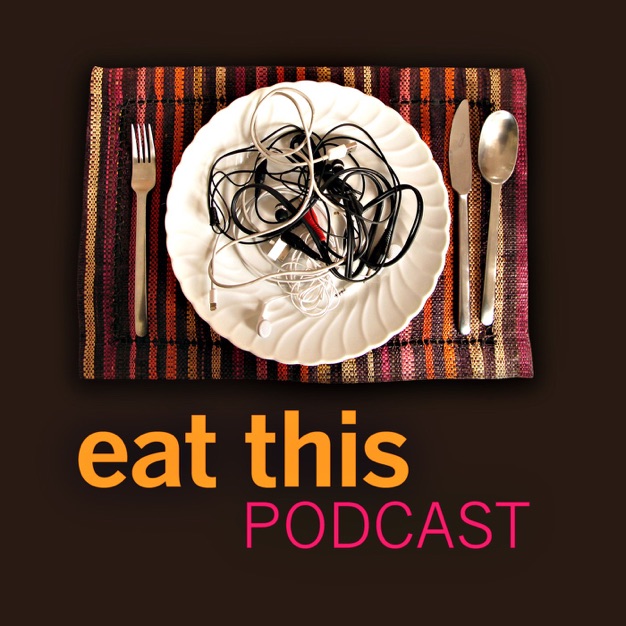
Eat This Podcast
[email protected] (Jeremy Cherfas)
Using food to explore all manner of topics, from agriculture to zoology. In Eat This Podcast, Jeremy Cherfas tries to go beyond the obvious to see how the food we eat influences and is influenced by history, archaeology, trade, chemistry, economics, geography, evolution, religion -- you get the picture. We don't do recipes, except when we do, or restaurant reviews, ditto. We do offer an eclectic smorgasbord of tasty topics. Twice nominated for a James Beard Award.
- 17 minutes 12 secondsSensual, Salty, and a Little Bit Spicy
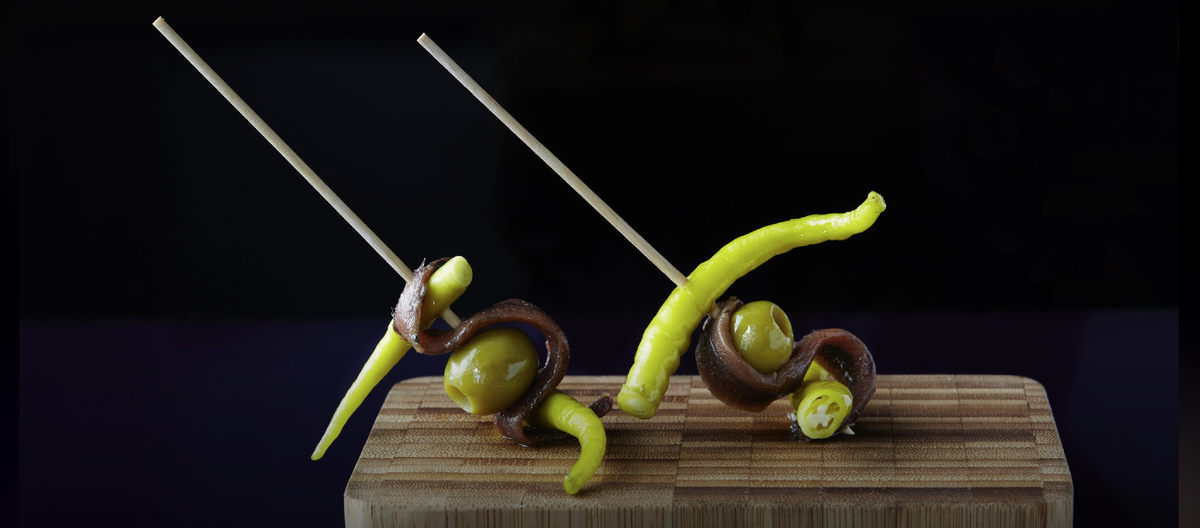
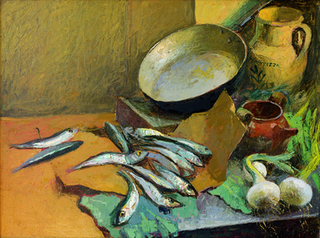 No apologies for once again casting my net in the fruitful waters of Basque cuisine and history.
No apologies for once again casting my net in the fruitful waters of Basque cuisine and history.There is a pintxo — those tasty bites of stuff on a toothpick — that consists of a plump Cantabrian anchovy, a pickled guindilla pepper and an olive. Some people reckon it is the original pintxo, invented by one of the regulars at a bar in San Sebastián. Others are not so sure. Everyone agrees, however, that it owes its name — the Gilda — to Rita Hayworth, who starred in the movie of that name.
Last time I spoke to Marcela Garcés, we didn’t have time to talk about the Gilda. This episode fixes that omission.
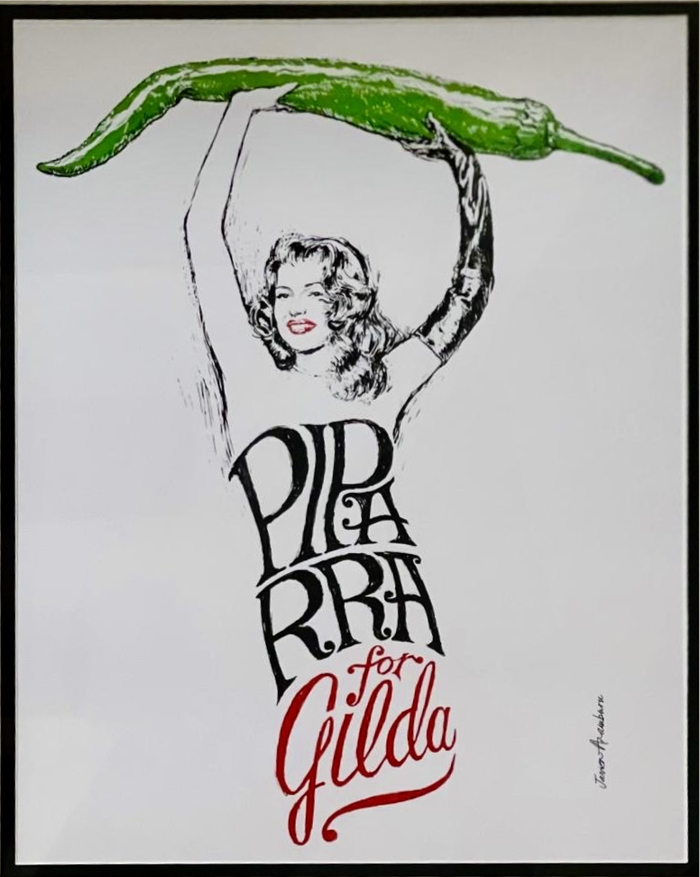
I also had to contact Chris Beckman again, to see if he could enlighten me on what he calls the Swedish Anchovy Conundrum.
Notes
- Here, again, is Marcela Garcés’ paper: In Defense of the Anchovy: Creating New Culinary Memories through Applied Cultural Context.
- Christopher Beckman’s book is A Twist in the Tail: How the Humble Anchovy Flavoured Western Cuisine.
- What’s in a name? Mislabeling fish since the 16th century offers more information of the history of Swedish “anchovies”.
- Here is the transcript.
- Still Life with Anchovies by Antonio Sicurezza. Piparra for Gilda by Javier Aramburu, and thanks to Marcela for the photo. I’d love to credit the photographer of the cover and banner image, but none of the places where I might have stolen it saw fit to give credit. If it is yours, let me know.
23 December 2024, 12:00 pm - 27 minutes 25 secondsBetter Diets for All

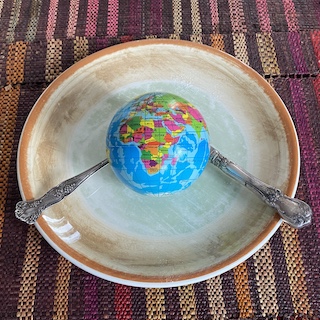 A thorough trawl in 2020 brought to light more than 40 different kinds of policies around the world designed to improve diets to deliver better nutrition and health. And yet, the vast majority of people do not eat within dietary guidelines. If anything, diets — and with them health — are getting worse in many places. What’s the problem? Maybe, it is that the people who devise the policies are too far away from the lives of the people they’re trying to help.
A thorough trawl in 2020 brought to light more than 40 different kinds of policies around the world designed to improve diets to deliver better nutrition and health. And yet, the vast majority of people do not eat within dietary guidelines. If anything, diets — and with them health — are getting worse in many places. What’s the problem? Maybe, it is that the people who devise the policies are too far away from the lives of the people they’re trying to help.That’s the gist of a new paper from a group of researchers in the UK. They argue that “a fresh approach is needed, one that considers the full picture of people’s realities”. Corinna Hawkes, lead author on the paper, took me through some of those realities.
Notes
- The published paper is The full picture of people’s realities must be considered to deliver better diets for all.
- The earlier podcast, with Corinna Hawkes, Patrick Webb and Eileen Kennedy is We need to talk about diets.
- Here is the transcript, thanks to generous supporters.
9 December 2024, 12:00 pm - 26 minutes 46 secondsBennett’s Law

 For a long time people have suspected that there is a kind of logic to what people buy as they have a bit more to spend on food. First, they change from coarse grains — things like sorghum or millet — to fine grains, wheat and rice, maybe corn. Then they switch up to protein from animal-sourced foods. This logic was even considered something of a law, Bennett’s Law, after Merrill Bennett, the agricultural economist who formulated the idea in the early 1940s. But it wasn’t really a law, because no-one had actually studied income and food purchases under controlled conditions.
For a long time people have suspected that there is a kind of logic to what people buy as they have a bit more to spend on food. First, they change from coarse grains — things like sorghum or millet — to fine grains, wheat and rice, maybe corn. Then they switch up to protein from animal-sourced foods. This logic was even considered something of a law, Bennett’s Law, after Merrill Bennett, the agricultural economist who formulated the idea in the early 1940s. But it wasn’t really a law, because no-one had actually studied income and food purchases under controlled conditions.Now someone has, with the first empirical test of Bennett’s Law. For Marc Bellemare, the lead author, the research, “changes your view of how the world works”.
Notes
- Income and the Demand for Food among the Poor, by Marc F. Bellemare, Eeshani Kandpal, and Katherina Thomas can be downloaded from JSTOR.
- Marc Bellemare has a website where he explains difficult things clearly. You might also like to listen to his other episodes on the podcast.
- As it happens, just last week the USDA published a chart showing Engels’ Law at work in the US.
- Here’s the transcript.
25 November 2024, 12:00 pm - 30 minutes 12 secondsThe Cost of a Healthy Diet
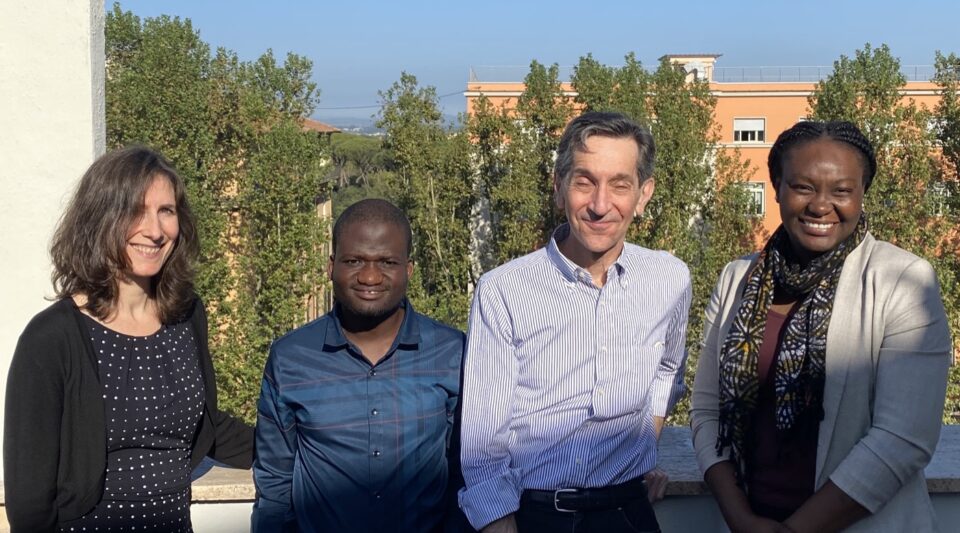 Anna Herforth, Imran Chiosa Will Masters, and Olutayo Adeyemi
Anna Herforth, Imran Chiosa Will Masters, and Olutayo Adeyemi
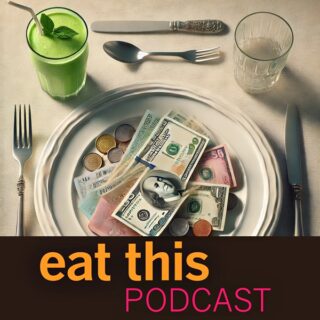 Let’s assume that people understand what they ought to eat to keep themselves healthy over the course of their lives and that the nutritious food to deliver good health is available in the market. More than one in three of the world’s people simply cannot afford a healthy diet. We know because the Food Prices for Nutrition team at Tufts University has developed tools that allow countries to use data that most of them are already collecting (to compile their Consumer Price Index) and from them calculate the cost of a healthy diet. The results have been alarming for some policy-makers, with encouraging results in at least one country.
Let’s assume that people understand what they ought to eat to keep themselves healthy over the course of their lives and that the nutritious food to deliver good health is available in the market. More than one in three of the world’s people simply cannot afford a healthy diet. We know because the Food Prices for Nutrition team at Tufts University has developed tools that allow countries to use data that most of them are already collecting (to compile their Consumer Price Index) and from them calculate the cost of a healthy diet. The results have been alarming for some policy-makers, with encouraging results in at least one country.Anna Herforth, who first told me about the cost of a healthy diet in 2021, was in Rome recently for a workshop on diet cost metrics with her colleagues Will Masters, who leads the Food Prices for Nutrition team, Olutayo Adeyemi, from Nigeria, and Imran Chiosa from Malawi. A chance too good to miss, despite the roar of the traffic beneath us.
Notes
- The website of Food Prices for Nutrition offers more detailed explanations and links to other places where the data are being used. This one lets you see the numbers for each country; the surprise is that even in high-income countries, large numbers of people cannot afford a healthy diet.
- The first episode on this topic was The cost is too damn high.
- Want a transcript? We’ve got you covered, thanks to the show’s supporters.
- Cover photo by DALL-E.
11 November 2024, 12:00 pm - 23 minutes 34 secondsAnchovies Part 2

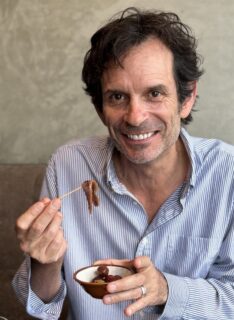 The Spanish are the world’s greatest anchovy eaters. They get through about 2.69 kilograms each a year, more than a tin a week. So you might be forgiven for thinking that anchovies have always been a part of Spanish cuisine. Not so, with the exception of the good people of Malaga, who developed a thing for deep-fried fresh anchovies. The rest of Spain resolutely ignored anchovies as food, spreading them instead on their fields as fertiliser. All that started to change in the late 19th century, when Italians, expert in the ways of salting fish, fetched up on the Basque coast to buy up all the fish that nobody else wanted. Among them, Giovanni Vella, who invented the modern tin of anchovy fillets in olive oil.
The Spanish are the world’s greatest anchovy eaters. They get through about 2.69 kilograms each a year, more than a tin a week. So you might be forgiven for thinking that anchovies have always been a part of Spanish cuisine. Not so, with the exception of the good people of Malaga, who developed a thing for deep-fried fresh anchovies. The rest of Spain resolutely ignored anchovies as food, spreading them instead on their fields as fertiliser. All that started to change in the late 19th century, when Italians, expert in the ways of salting fish, fetched up on the Basque coast to buy up all the fish that nobody else wanted. Among them, Giovanni Vella, who invented the modern tin of anchovy fillets in olive oil. It was, according to Chris Beckman, author of A Twist in the Tail: how the humble anchovy flavoured Western cuisine, a win for everyone.
Notes
- Christopher Beckman’s A Twist in the Tail: How the Humble Anchovy Flavoured Western Cuisine is published by Hurst & Co.
- If you haven’t already heard it, the previous episode celebrates the anchovy in modern Spain.
- Here’s the transcript. Also, from this episode, I am trying to make transcripts available in podcast players that offer this service. Let me know if you experience any difficulties.
28 October 2024, 12:00 pm - 23 minutes 20 secondsAnchovies Part I

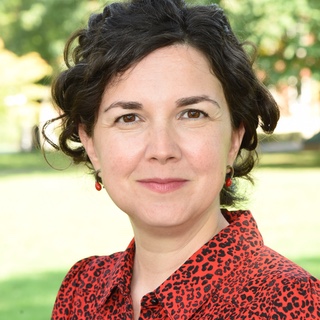 Marcela Garcés
Marcela Garcés
Anchovies can be very divisive; some people absolutely cannot stand them. I can’t get enough of the little blighters. What’s the difference? It might be as simple as the way they’re stored.
At the Dublin Gastronomy Symposium this past summer, I was delighted to learn one crucial way to improve any tin of anchovies: keep it in the fridge until you’re ready to use it.
Marcela Garcés is a professor at Siena College in New York, and as a side hustle she and her husband Yuri Morejón run La Centralita, a culinary studio that aims, among other things, “to teach guests about anchovies as a gourmet food in context”. As a result of our conversation, I now hold anchovies in even higher regard.
Notes
- Marcela Garcés’ paper is In Defense of the Anchovy: Creating New Culinary Memories through Applied Cultural Context.
- La Centralita is in Albany, New York.
- Here is the transcript, thanks to the generosity of supporters
- Banner photograph from Marcela Garcés.
14 October 2024, 11:00 am - 23 minutes 24 secondsCrunch Time: Insects Are Not Going to Save Us

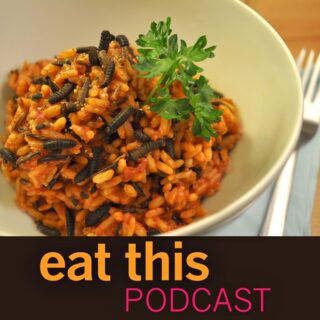 If only we could get over our squeamishness, insects can save the planet, banish hunger, protect the rainforests and reduce the climate catastrophe. At least, that’s what article after article tell us as they sing the praises of feeding our food waste to insects like the larvae of the black soldier fly. Insects can grow 5000-fold in 12 days, producing prodigious quantities of protein in less than 100th the space of soya beans.
If only we could get over our squeamishness, insects can save the planet, banish hunger, protect the rainforests and reduce the climate catastrophe. At least, that’s what article after article tell us as they sing the praises of feeding our food waste to insects like the larvae of the black soldier fly. Insects can grow 5000-fold in 12 days, producing prodigious quantities of protein in less than 100th the space of soya beans. There’s just one fly in the ointment, so to speak. Most of the food that insects are fed isn’t waste at all, and after absorbing large amounts of investor cash, some of the biggest companies have gone bust. Dustin Crummett, executive director of the Insect Institute, shared his many reasons for saying that eating insects will not save the planet.
Notes
- Dustin Crummett is executive director of The Insect Institute. His paper: Is turning food waste into insect feed an uphill climb? A review of persistent challenges.
- If not food or feed, how about “valuable raw materials for various industries”?
- Here’s the transcript. You can thank the donors, and become one yourself.
- Cover photograph from designer Katharina Unger’s Farm 432 concept, “a fly-breeding device for home use that continually collects fly larva as a protein source for less squeamish diners”
- Banner photo by Muhammad Mahdi Karim from Wikimedia shows black soldier flies making more black soldier flies.
30 September 2024, 11:00 am - 24 minutes 32 secondsOlives Reborn in the Salento

 Silvestro Silvestori stands in front of some of the metal cans of his varietal olive oils.
Silvestro Silvestori stands in front of some of the metal cans of his varietal olive oils.
Xylella fastidiosa is a bacterium that attacks all manner of plants. It prevents water getting to the leaves, so the plant essentially dies of drought. It probably arrived in Italy in 2008 but wasn’t really noticed until 2013, attacking a few trees around the town of Gallipoli in the Salento, the heel of the boot of Italy. Thanks to badly botched responses it spread, carried by spittlebug insects that live in the plants under the olives. By 2019, efforts to control the spread of Xylella were more or less abandoned, and the disease had killed 10 million olive trees in the Salento.
People – including me – thought it might be the death of olive oil production in the Salento and the rest of Puglia. In the past couple of years, however, literal green shoots of resistant olive varieties have taken hold, and with them the opportunity for a new industry focused on high-quality, profitable olive oil. To learn more, I went to visit Silvestro Silvestori, who runs The Awaiting Table cookery school in Lecce.
Notes
- The Awaiting Table Cookery School runs lots of different courses, including an opportunity to plant new olive trees.
- Here is the transcript.
- Cover photo of a fiscolo, the jute mat used in older mills to contain the crushed olives in the press. Banner photo of FS17® La Favolosa from iocolivivai
16 September 2024, 10:00 am - 24 minutes 42 secondsAvocado Anxiety: how to choose what to eat

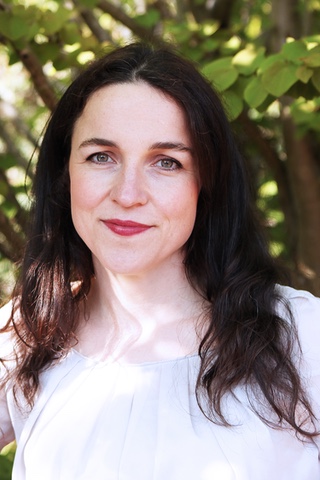 Louise GrayWinner of the Guild of Food Writers award for investigative work in 2024, Avocado Anxiety is about more than avocados. It offers a deep look at the implications of the choices we are faced with when deciding what to buy. Local may not always be best for the planet, but perhaps it avoids the worst abuses of labour. And air-freighted is usually terrible for greenhouse gas emissions, but may be good for communities far away.
Louise GrayWinner of the Guild of Food Writers award for investigative work in 2024, Avocado Anxiety is about more than avocados. It offers a deep look at the implications of the choices we are faced with when deciding what to buy. Local may not always be best for the planet, but perhaps it avoids the worst abuses of labour. And air-freighted is usually terrible for greenhouse gas emissions, but may be good for communities far away.Some universal truths did emerge from our conversation. Fruit and veg is almost always better for the planet than meat, and homegrown is generally preferable to imported. Exceptions, however, are not uncommon, and in the end questions outnumber simple answers.
Notes
- Avocado Anxiety: and Other Stories About Where Your Food Comes From is available from Bookshop.org and elsewhere.
- We didn’t discuss the meaning of the word avocado, thank heavens, because the greatest service I can offer is to point out that nobody believes that words like nut or ball actually mean testicle. Let the Nawatl Scholar explain: the word guacamole does not come from the Nahuatl word for “ground testicles or avocados”..
- The book Louise Gray mentioned at the end is The Avocado Debate by Honor May Eldridge.
- Here is the transcript.
- Photo of Louise Gray by Nancy MacDonald. Others scraped by me from Instagram.
2 September 2024, 11:00 am - 26 minutes 57 secondsPalatable is not Potable

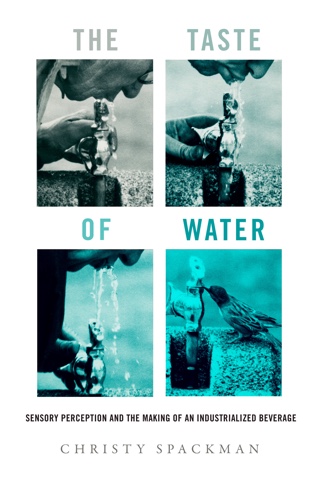 Water is tricky stuff. It can be limpid and clear but dangerous, home to harmful bacteria and parasites. It can be murky, but perfectly safe to drink. It may smell of chlorine, which puts people off, but perversely that is a sign that no bacteria are present.
Water is tricky stuff. It can be limpid and clear but dangerous, home to harmful bacteria and parasites. It can be murky, but perfectly safe to drink. It may smell of chlorine, which puts people off, but perversely that is a sign that no bacteria are present.So how do we judge the quality of water? That’s the subject of a new book — The Taste of Water — by Christy Spackman at Arizona State University. She looks at the history of water purification and efforts to understand the complex interplay between the quality of water from a public health standpoint and the sensory perceptions that people use (or don’t use) to decide whether they trust it.
Notes
- The Taste of Water: Sensory Perception and the Making of an Industrialized Beverage is published by University of California Press. Christy Spackman’s website offers insights into her work.
- Wichita Falls, the town in Texas that used recycled water to cope with drought, is proud of its water purification. Scientific American had an article about the project.
- Lithium in spa waters? Yes! See Lithium with your tonic, Sir? in the magazine of the Geological Society of London.
- Here is the transcript.
- Banner photo by me in our local park. Cover photo by gcardinal from Norway, CC BY 2.0, via Wikimedia Commons.
17 June 2024, 11:00 am - 25 minutes 34 secondsWomen Butchers

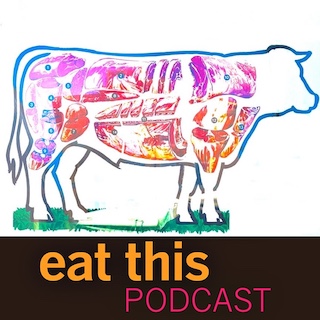 Cheap supermarket meat has been making life difficult for independent butchers for quite some time now. England has lost 60 per cent of its butcher shops in the past few decades, Australia 80 per cent. I couldn’t find figures for the United States. Against that background, there has been an uptick of interest from young people wanting to learn the skills needed to deconstruct an animal carcass. What surprised me – and of course it shouldn’t have – is that women are learning butchery. I chatted with three of them.
Cheap supermarket meat has been making life difficult for independent butchers for quite some time now. England has lost 60 per cent of its butcher shops in the past few decades, Australia 80 per cent. I couldn’t find figures for the United States. Against that background, there has been an uptick of interest from young people wanting to learn the skills needed to deconstruct an animal carcass. What surprised me – and of course it shouldn’t have – is that women are learning butchery. I chatted with three of them.Notes
- Olivia Potts’ article, which triggered my interest, is The Women at the Cutting Edge of Butchery. She has a website too.
- Instagram is the best place to find Martina Bartolozzi and while Sophie Minchilli is also on Instagram, she has a website. Both offer great food tours.
- Here is the transcript.
3 June 2024, 11:00 am - More Episodes? Get the App
Your feedback is valuable to us. Should you encounter any bugs, glitches, lack of functionality or other problems, please email us on [email protected] or join Moon.FM Telegram Group where you can talk directly to the dev team who are happy to answer any queries.
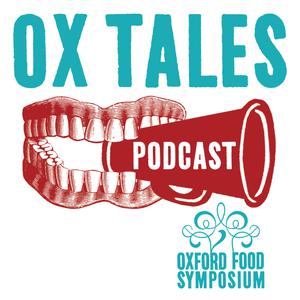 Ox Tales
Ox Tales
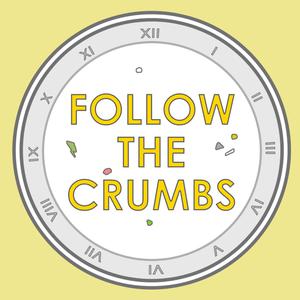 Follow the Crumbs
Follow the Crumbs
 Modernist BreadCrumbs
Modernist BreadCrumbs
 Rise Up! The Baker Podcast with Mark Dyck
Rise Up! The Baker Podcast with Mark Dyck
 Eat Your Words
Eat Your Words
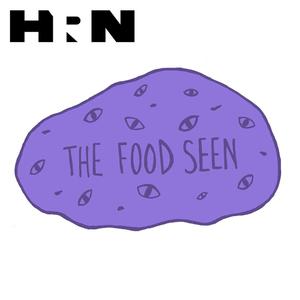 THE FOOD SEEN
THE FOOD SEEN